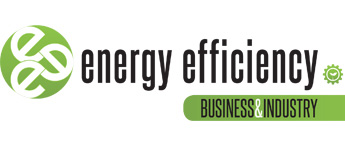Today countless companies around the world employ gasketed plate heat exchangers as a core element in their day-to-day operations. While these units have long been a standard piece of equipment in nearly every industry imaginable, Alfa Laval has seen room for continuous improvement. For several years, the company has worked with customers to better understand how plate heat exchangers can offer more in their processes.
“In rethinking the design of our heat exchangers, the development process has been entirely driven by the needs and feedback of our customers,” says Carina Resare, Head of Research and Development for gasketed plate heat exchangers at Alfa Laval. “The demands of industry today require a reliable, more efficient heat exchanger that is also easy to maintain, and many of our customers are increasingly focused on improving worker safety and reducing the environmental impact of their operations. In these next-generation heat exchangers, we have included a number of design features specifically with these objectives in mind.”
Higher efficiency for sustainable productivity
A major focus for Carina’s development team was to offer customers solutions that would improve energy efficiency in production. “There are two aspects to creating a more efficient heat exchanger,” she explains. “You need to maximize heat transfer, while also minimizing fouling.” The next-generation heat exchangers are built with a number of features that do just that, such as Alfa Laval’s CurveFlow™ solution. CurveFlow™ is a unique plate pattern engineered to optimize the distribution area, creating a more uniform flow of media across the whole plate. This eliminates the potential for dead spots, which in turn reduces the risk of fouling.
“With an unparalleled level of efficiency, the heat exchanger can perform using fewer plates, which means an even more compact unit,” Carina adds. “Over time, it also requires fewer spare parts and consumes less energy, which both saves money and is good for the environment.”
A reliable workhorse
In rethinking the gasketed plate-and-frame design, Alfa Laval has also sought to ensure dependable operation over a long lifecycle. “For most of our customers, the heat exchanger is a vital part of their processes,” Carina explains. “If their unit breaks down, production grinds to a halt, resulting in downtime that can be very costly.” Alfa Laval’s unique five-point alignment is an example of one feature that contributes to the reliable performance of the next-generation heat exchangers. It consists of three support points at the top of each plate and two at the bottom, which together keep all plates in the correct position as the package is compressed and while the unit is in operation. The five-point alignment systems prevent leakage, which could lead to unplanned stops. It also offers the added benefit of making it easier to take out individual plates for cleaning and maintenance. Furthermore, the design eliminates the snaking of plates as the unit is closed, enabling easier handling and protecting against damage from skewed plate positioning. With models engineered for a variety of applications, ranging from low-temperature water-to-water duties to the most demanding industrial positions, Carina believes the new line will continuously meet the exacting standards of Alfa Laval’s customers. “Ideally, the heat exchanger should be something they can forget about,” she says. “It should just reliably do the job that it’s supposed to do.”
Shortening service downtime
The concept behind plate-and-frame construction is that it makes a heat exchanger simple to open and close when inspection or maintenance becomes necessary. Nevertheless, Alfa Laval has repeatedly heard from customers that some alternative solutions make servicing the unit a difficult and time-consuming process.
“The longer service takes, the longer the equipment is out of operation,” says Carina. “That is why we have taken steps to make maintenance of our gasketed plate heat exchangers even easier and faster than before.”
Among the new features on Alfa Laval’s next-generation range of heat exchangers are solutions specifically developed to simplify the process of opening, closing and removing plates for service. This includes the ClipGrip™ gasket, which features an improved, robust design that fastens better to the plate and won’t fall off during cleaning and maintenance. “ClipGrip™ is also designed to prevent tangling of the gaskets, allowing regasketing to go more quickly,” Carina notes. “And the durable construction means less risk of the gaskets breaking in the first place, so the customer will not need to replace the gaskets as frequently.”
Thermal standards for the future
The launch of the next-generation range is scheduled to take place over the next three years. The first wave includes three models: Alfa Laval T8, Alfa Laval T35 and Alfa Laval T25. New models will be continuously launched throughout 2018 and 2019, and by 2020 Alfa Laval’s entire line of industrial plate heat exchangers will be part of this high performing family of products.
“When we set out to design this next generation, our goal was to combine all new solutions with the best technology we have developed throughout our extensive history with heat exchangers,” says Carina. “The result has been what we believe is the most modern line of industrial plate heat exchangers available on the market today.”





















